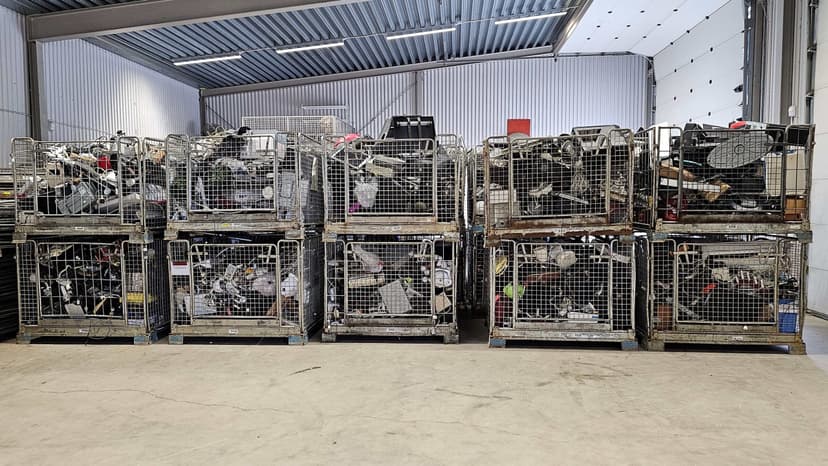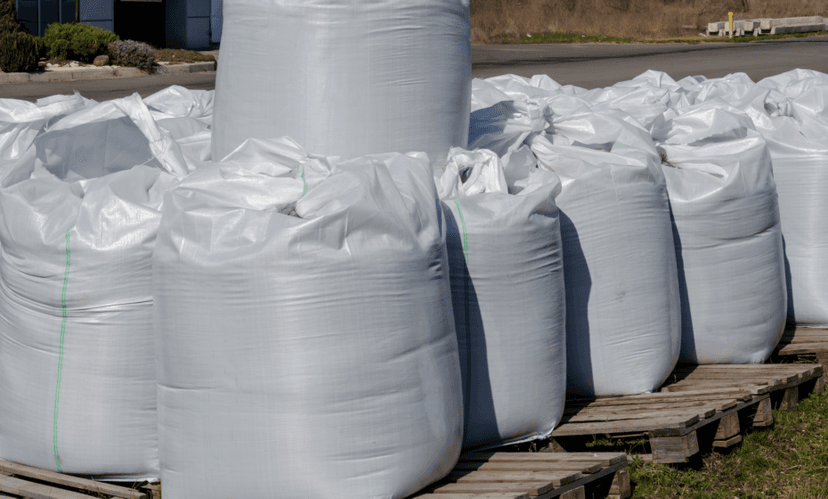Warehouse Shelving Units for Sale - New & Used
Shelving systems and bulk racks are a storage option that can generally be loaded and unloaded by a human. These metal shelving units are used extensively in tool cribs or in supply businesses where access to small, but often heavy, item storage is needed. Many companies may need bulk racks for storage of heavy items. They can also be used to hold smaller boxes, parts storage bins, or for the bulk storage of documents. Storage racks can be made of plastic or metal, but they are most commonly made of metal. Metal bulk racks do have an advantage in that their shelf height is often adjustable, while plastic bulk racks often have fixed shelf heights.
At Container Exchanger, we specialize in used bulk storage racks. We buy and sell used items throughout North America, and we work hard to maximize ROI for your company. Please browse our selection of used items below. When you find something you like, fill out the form on its page, and we will call to follow up, confirm availability and freight rate options.
Find Shelving Systems, Used or New for your Warehouse or DC, this storage option can generally be loaded and unloaded by a human.
Types of Industrial Warehouse Shelving
Industrial shelving comes in a wide range of designs, each built for specific storage needs. Some shelving is meant for lighter-duty backroom use, while bulk rack shelving can handle heavier loads. Steel shelving is a go-to in warehouses that want strength and adjustability, and rivet shelving makes setup quick without needing bolts or clips. Many of these units work with wire decking or other rack accessories to improve safety and organization. Whether you’re running a distribution center, a backroom stock area, or a manufacturing space, the right shelving makes it easier to maximize vertical space and keep products within reach.
Backroom Shelving
Backroom shelving is a simple and practical choice for smaller operations or areas that need fast access to items since they're lightweight, easy to move, and can fit into tighter spaces. They’re often used for storing retail backstock, parts, or supplies that don’t require forklifts or pallet jacks. Backroom shelving gives quick organization without taking up too much floor space.
Bulk Rack Shelving
Bulk rack shelving sits between light storage and full pallet racking. It’s strong enough for heavier cartons or bins but still easy to load by hand. Warehouses often rely on it for medium-weight goods that don’t need forklifts. It’s sturdy, practical, and helps keep aisles clear without going overboard on heavy-duty systems.
Steel Shelving
Steel shelving is tough, reliable, and made for long-term use. Each shelf can take a lot of weight, and most designs let you adjust the levels as your storage changes. That makes it a favorite in warehouses, tool cribs, and bulk storage rooms where durability matters and layouts can’t always stay the same.
Rivet Shelving
Rivet shelving is a favorite for warehouses because it’s strong yet simple to assemble. Instead of bolts, the beams lock into place with rivets, making setup fast and straightforward. The best part is you can easily add on units later, making it a flexible option for warehouses that expect storage needs to grow over time.
Choosing the Right Type of Warehouse Shelving
Picking warehouse shelving starts with knowing your inventory and your business needs. If you’re storing small parts, steel or rivet shelving might be your best bet. For bulkier items, bulk racks handle weight without needing a forklift to access them. Backroom shelving works well for lighter products or areas with limited space. You’ll also want to think about vertical space and aisle width so your team can move safely and efficiently. Adding wire decking or other rack components can improve stability and organization. With plenty of options, there’s always a setup that balances cost, durability, and capacity for your warehouse.
Shelving Systems FAQs
What are warehouse shelving units used for?
Warehouse shelving units give businesses a simple way to keep inventory organized and easy to reach. They’re used for everything from spare parts and hardware to bins, cartons, and supplies that don’t need a forklift. Since items are loaded by hand, shelving works well in backrooms, tool areas, or smaller spaces where pallet racks for sale might be too much.
What types of shelving units are best for warehouses?
The best shelving depends on what you’re storing and how you work day to day. Bulk racks work well for heavier cartons, steel shelving handles industrial use, and rivet shelving offers strength with quick assembly. Backroom shelving suits lighter storage needs. Some warehouses even combine shelving with pallet racking or cantilever racks for sale to handle all product sizes efficiently.
What are some common shelving sizes?
Warehouse shelving comes in many sizes to match your space and storage needs. Widths typically range from 36 to 96 inches, with depths between 12 and 48 inches. The shelving unit heights vary from smaller backroom units to taller industrial shelving reaching 12 feet or more. Shelving sizes should be chosen based on aisle space and the products being stored.
How much weight will Warehouse shelves hold?
The shelving units’ weight capacity depends on the shelving style and materials. Steel and bulk racks usually hold hundreds to thousands of pounds per shelf, while lighter backroom units handle less. Then if you have wire decking, it adds stability and helps distribute weight. Always check manufacturer guidelines to avoid overloading shelves and keep storage racks safe for daily use.
How do I choose the right shelving unit for my warehouse?
Start with your products — what they weigh, how often they’re accessed, and how much vertical space you have. Then consider layout and aisle width to keep workflow smooth. Rivet shelving is easy to expand with add on units, while bulk racks or steel shelves handle heavier items. Many managers also look at long-term growth, safety features, and how well shelves fit with existing rack components.
Are used warehouse shelving units safe to use?
Yes, but we always suggest buying from a reliable source and then inspecting before use. Many used units are built from strong materials and can perform like new. Always check that rack components and rack accessories are in good shape, free of damage, and capable of supporting your loads. With proper inspection, used shelving is a budget-friendly way to expand storage safely.

We'll Buy your Used Containers
HOW TO SELLINFO FOR SELLERS
Container Exchanger will help your company save money by:
- Providing Free professional website listing and assistance!
- Providing exposure to a nationwide network of manufacturers.
- Marketing and advertising to ensure quick sale.
- Arranging the shipping required for the items sold.
- Our service helps you maximize return from your packaging investment.
INFO FOR BUYERS
Container Exchanger will help your company save money by:
- The listed price includes all fees, there will be no surprises.
- Purchasing used packaging greatly reduces your costs.
- Eliminating the "middle-man" typically involved in purchasing packaging.
- Simplified Order Delivery - We'll arrange shipping for the goods you purchase.
- Free Want Ads for any items that you do not find listed.

Buying from Container Exchanger will Save you Money!
HOW TO BUYRead Our Latest Blog

IBC Tote Dimensions: The Complete Guide - Container Exchanger
Dec 26, 2025 | 16 days 3 hours
IBC Tote Weight Explained: Empty, Full & Load Specs - Container Exchanger
Dec 26, 2025 | 16 days 3 hours
Metal Bulk Bins Uses in the Automotive Industry - Container Exchanger
Jun 27, 2025 | 6 months 17 days
Super Sacks®: Bulk Handling Solution | Container Exchanger
Jun 6, 2025 | 7 months 9 days
